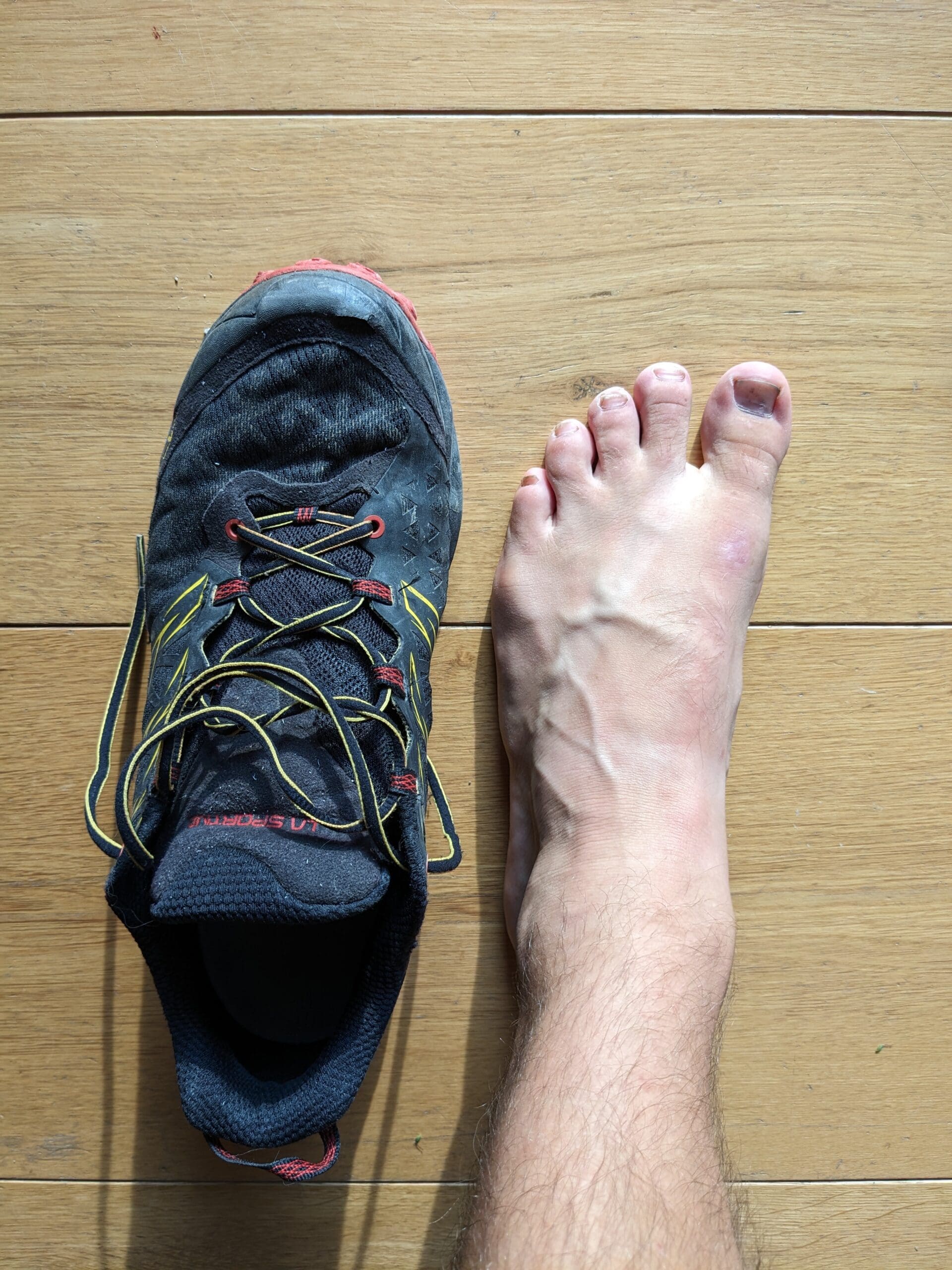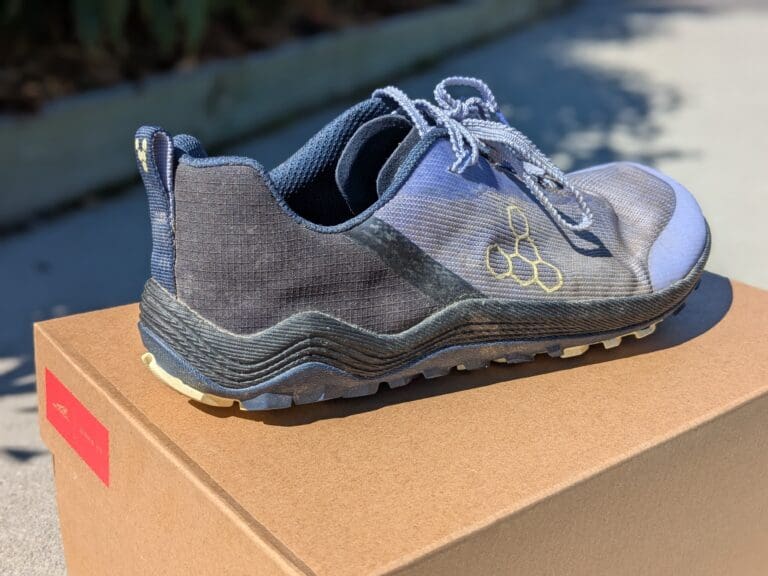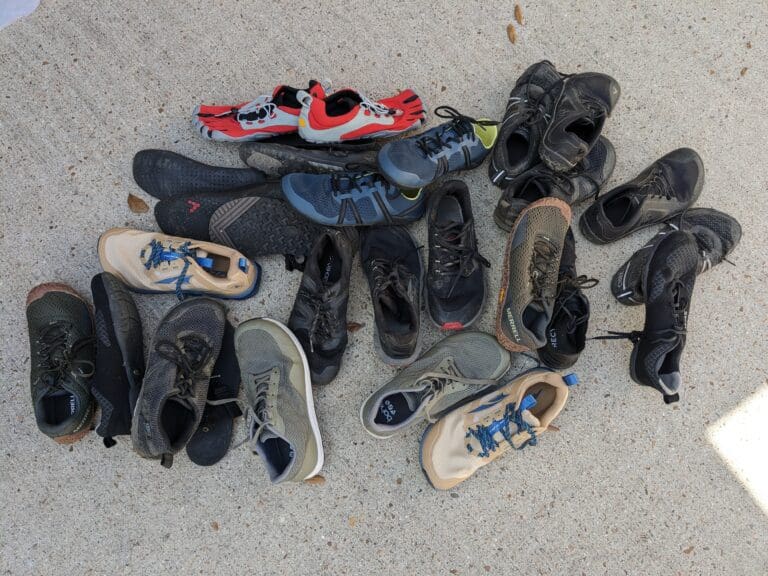Barefoot. It’s the next big thing. But haven’t we heard this before?
You’re right; back in the early 2010s, thanks mainly to the book Born To Run, we saw the popularity of minimal shoes and barefoot running grow substantially, only to fall off a cliff soon after.
But now I’m here to convince you we’re well into the second wave of barefoot, and this time it’s bigger.
Let’s find out why.
Which minimal running shoe is for you?
Take a quick 5-question quiz to identify the perfect minimal running shoe for your feet! You'll get both road and trail options based on your answers!
I know I’m nestled deeply in the barefoot scene, but to me, it seems like more and more people are talking about minimal shoes these days.
Even my friends are considering barefoot when they used to just roll their eyes.
So, am I imagining all this growth?
It’s true! Look at those Google Trend stats! Searches for Barefoot Shoes are popping.
And what’s more, those indications show that the scene is bigger than last time.
We can further back this up when we look at the big barefoot brands. Vivobarefoot and Xero Shoes
With that sharp increase over the last year, I can only hope that more people are transitioning, and this time hopefully, they’re doing so safely!
It seems like a good time to say it: If you’d like to learn how to incorporate barefoot running into your training, check out my Barefoot Guide, where I lead you through step-by-step.
Finally, this trend isn’t just localized to the barefoot scene; our foot-shaped shoes over at Altra also see increased love.
Now, compare that to a conventional brand such as Nike, we see a very small decline in search terms. Even though their brand isn’t primarily focused on shoes, you would still expect to see growth, especially around the super shoe craze.
But I should note some other conventional brands like Hoka and New Balance saw some decent growth over the last few years. So, we can’t say all conventional brands are seeing the same results.
Let’s hypothesize why this could be true, or some would say “guess”. 😆
Everyday Adoption
Back in 2010 when we had the first barefoot craze, it was fairly localized in the running niche. We had Vibram Five Fingers, New Balance Minimus all being marketed towards runners.
This time it’s different.
We see many everyday brands coming into the scene offering alternatives to conventional dress shoes, all the way to casual gym trainers.
Be Lenka
Splay
Feelgrounds
Groundies
Wildlings
Bohempia
Just to name a few. Many of these brands focus solely on the casual/fashion market but still push the idea that barefoot is best.
So it’s not just the crazy runners (like us) jumping on the barefoot train; Jane from Marketing also has amazing options to suit her style, too.
The foot issues are catching up to the middle-aged generation
Thanks to Nicholas Budzyn for prompting this idea.
After years of binding their feet in conventional shoes, many middle, to older aged folk are searching for answers.
How many older women do you know with bunions that now inhibit their shoe choices? (note that bunions are more prevalent in women than men)
Well, now there’s an industry telling (and selling) them a true solution. And that’s foot-shaped shoes.
If you’d like to learn more, I talk more about the benefits of an anatomically shaped toe box in “The Hidden Dangers of Narrow Toe Boxes”.
Sadly, the best solution would have been preventative measures, so for anyone under the age of 30, I encourage you to think about foot health now! Get out of those conventional toe crushers and look for foot-shaped options for all walks of life.

There is no way my foot is suppose to fit into a shoe this shape.
It’s not just bunions, either. Anything from lower back pain to plantar fasciitis may be helped with choosing better footwear. I wouldn’t suggest this is the only solution you should explore, but it’s part of a holistic approach.
We’re starting to see minimal shoes in professional sport!
Sadly, I’ve not heard of any professional runners coming out to say they use minimal shoes in training, but we have seen many happy converts in the gym, CrossFit, basketball, and even surfing!

It’s beautiful to see athletes recognize that their feet are part of their body and need training to their maximum ability.
With high-profile sports adoption like this, the movement will be pushed further into the mainstream and encourage the general public to explore barefoot and foot-shaped solutions.
Let’s quickly loop back to barefoot for running. There are many references from those in the running scene, such as Jay Dicharry, founder of Mobo board and best-selling writer, who focuses intensely on the feet.
I’ve also heard many times that those over at Doctors of Running use Xero Shoes in their everyday life. Considering they focus on shoe reviews and physiotherapy, I pay special attention when I hear this. However, I’ve yet to hear suggestions on minimal shoes or even lower-stack shoes when running from them…
Either way, change is happening in the running scene, but still slower than in other areas of the shoe market.
Figures show that we’re expecting modest growth in the barefoot shoe market.
A recent market analysis showed that the global barefoot shoes market was valued at over $520 million in 2023 and is projected to grow at a compound annual growth rate (CAGR) of 5.1%, reaching approximately $738 million by 2030.
Personally, I don’t think that’s bullish enough.
And if we look to the foot-shaped market, I believe that Altra will also continue to grow at a rapid rate which will push many of the bigger conventional shoe brands to consider anatomically reshaping their toe boxes to capture some of the market demand.
But in the end, I expect we’ll see the biggest growth in the everyday casual market.
Many of the barefoot benefits can be gained from simply switching out those everyday shoes for similar minimal options. Other than the upfront cost, the barrier to entry for the general public is small.
With the growing awareness on social media, I can see that both barefoot brands and some conventional brands that jump on the barefoor/foot shape trend will see substantial growth by 2030.
And no matter how you look at it. That’s a step (pun intended) in the right direction. At least for the Western world.




Myself only had been paying attention to the existence of barefoot shoes and the overall benefits of being barefoot for about three years, before that I didn’t even knew that barefoot shoes are a thing and now I have them in my daily and running shoe rotations. My journey began with the frustration that all of my shoes, more or less, were squishing my toes together. So one day I googled why aren’t the shoes we buy have an anatomical foot shape design and then I found out about the existence of barefoot shoes. I knew Altra made zero drop shoes, but never paid much attention that their shoes also have a rounded toe box. Nowdays I have friends and other people I know that have started using barefoot shoes or at least they’ve heard and are talking or asking me about it. During hiking and trail running with my wife we often get complements for our shoes, especially my wife, who wears Vibram FiveFingers.
There are also a few running shoe brands that started making more anatomically shaped shoes. Inov-8 was always known for their precision fit fell running shoes and starting in 2024 they changed the design of their new lineup of shoes, all featuring a rounded toe box and with 3 width options in total. Ronhill recently released their first running shoes with their so called True-Fit Last, which I wouldn’t call wide, but at least it doesn’t restrict the big toes position and movement. Even though these are not zero drop or minimalist shoes by any means, except maybe Inov-8’s Trailfly Speed with a 22-18mm stack and a zero drop barefoot training shoe, it is certainly a good thing to see the design direction that some are taking.
Thanks for sharing your knowledge!
I never knew about Ronhill’s True-fit last. Looking it up now, I completely agree with your, they still look very narrow, but it is a sign that knowledge is spreading. I also have no idea who owns Ronhill now?